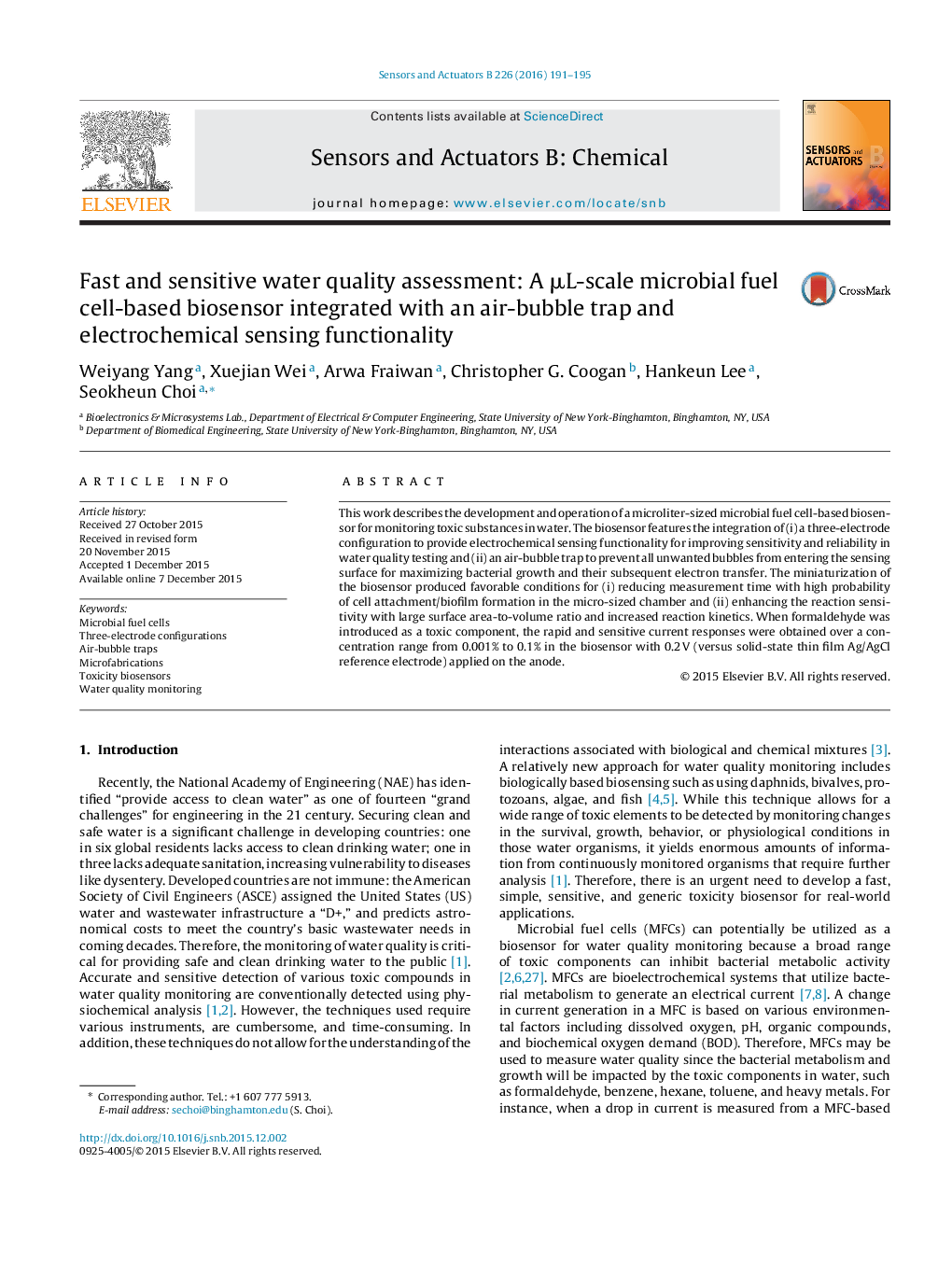| Article ID | Journal | Published Year | Pages | File Type |
|---|---|---|---|---|
| 7144745 | Sensors and Actuators B: Chemical | 2016 | 5 Pages |
Abstract
This work describes the development and operation of a microliter-sized microbial fuel cell-based biosensor for monitoring toxic substances in water. The biosensor features the integration of (i) a three-electrode configuration to provide electrochemical sensing functionality for improving sensitivity and reliability in water quality testing and (ii) an air-bubble trap to prevent all unwanted bubbles from entering the sensing surface for maximizing bacterial growth and their subsequent electron transfer. The miniaturization of the biosensor produced favorable conditions for (i) reducing measurement time with high probability of cell attachment/biofilm formation in the micro-sized chamber and (ii) enhancing the reaction sensitivity with large surface area-to-volume ratio and increased reaction kinetics. When formaldehyde was introduced as a toxic component, the rapid and sensitive current responses were obtained over a concentration range from 0.001% to 0.1% in the biosensor with 0.2Â V (versus solid-state thin film Ag/AgCl reference electrode) applied on the anode.
Related Topics
Physical Sciences and Engineering
Chemistry
Analytical Chemistry
Authors
Weiyang Yang, Xuejian Wei, Arwa Fraiwan, Christopher G. Coogan, Hankeun Lee, Seokheun Choi,
